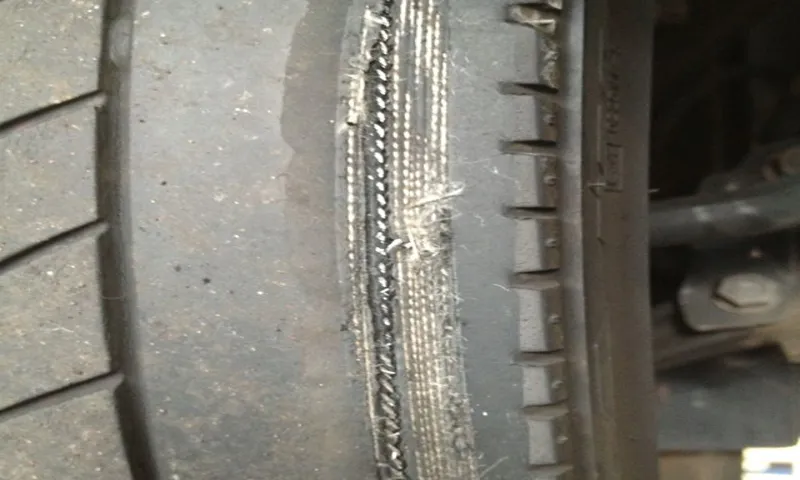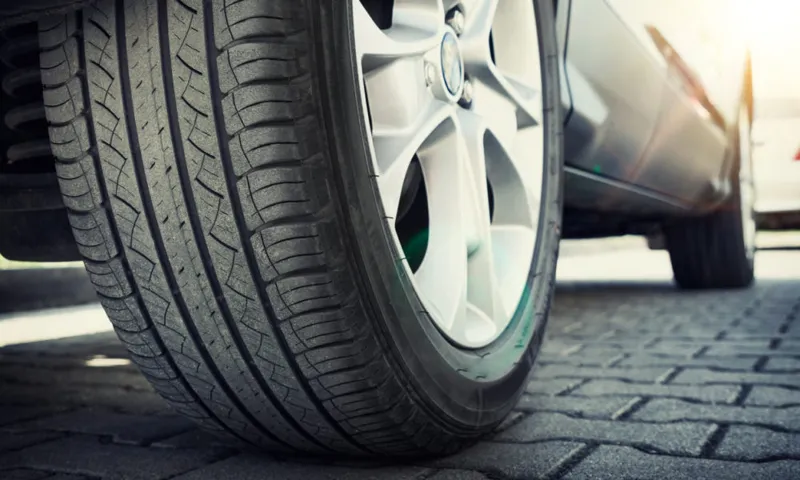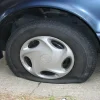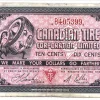Have you ever been driving down the road and noticed a strange noise coming from your tires? It’s important to pay attention to these sounds as they can indicate a potential problem with your vehicle. One of the most common issues that can cause tire noises is a bad tire. But what does a bad tire sound like? A bad tire can make a variety of noises depending on the problem.
For example, if your tires are worn unevenly, you may hear a rhythmic thumping or bumping sound as you drive. On the other hand, if your tire has a puncture or leak, you may notice a hissing or whistling sound. It’s important to address tire problems as soon as possible to avoid further damage or potential safety risks.
In this blog, we’ll go over the different sounds a bad tire can make so that you can identify any issues and take action before they become a bigger problem. So, buckle up and let’s dive in!
Table of Contents
Introduction
If you’re wondering what a bad tire sounds like, it’s typically characterized by a low rumbling or humming noise. This noise can be heard while driving and is more apparent at higher speeds. It’s essential to identify a bad tire sound because it can signal a serious problem that requires immediate attention.
For example, a loud thumping noise could indicate a flat spot on the tire, while a high-pitched whining sound often suggests that the tire is underinflated. Additionally, a bad tire can lead to a decrease in vehicle performance, reduced fuel efficiency, and even steer your vehicle off-course. Therefore, if you hear an abnormal noise when driving, it’s best to address the issue before it gets worse.
Regularly checking your tire pressure, tread depth, and overall tire condition can also help you avoid bad tire sounds.
Understanding Tire Noise
Tire noise is something that many drivers have experienced, but not everyone fully understands. Simply put, tire noise refers to the sound that comes from your tires as they roll along the road. This noise can vary in pitch and volume, depending on a variety of factors such as the type of tire, the road surface, and the speed you are driving.
While some tire noise is expected, excessive or unusual tire noise can be a sign of an underlying issue with your vehicle. It’s important to pay attention to any changes in your tire noise, as it can indicate problems with your tires or even your car’s suspension system. By understanding the different types of tire noise and what they might mean, you can take steps to keep your vehicle running smoothly and safely.

Conditions That Affect Tire Noise
Tire noise is a common problem that can affect your driving experience and cause discomfort. While there could be a number of reasons why tires produce noise, it’s important to understand that the conditions under which you drive can play a significant role. Various factors, such as weather, tire pressure, road conditions, and speed, can all contribute to the level of tire noise.
Driving on worn-out tires or those with uneven tread wear can also amplify the noise level. If you want a quieter driving experience, it’s important to pay attention to these conditions and take steps to minimize any factors that can intensify the noise from your tires. Regular maintenance and inspection of your tires can go a long way in keeping them in good shape and reducing noise.
Signs of a Bad Tire
Have you ever wondered what a bad tire sounds like? Well, there are a few signs that can indicate your tire may be in poor condition. One of the most obvious signs is a thumping or wobbling sensation while driving. This can be caused by an out-of-balance tire or one that is warped or damaged.
You may also notice a vibrating or shaking sensation in the steering wheel or throughout the entire vehicle. Another sign of a bad tire is excessive noise, such as a humming, whirring, or roaring sound. This noise can be caused by worn treads or uneven wear on the tire, which can lead to reduced handling and traction.
In extreme cases, a bad tire can cause a blowout or loss of control while driving, so it’s important to have your tires inspected and maintained regularly.
Vibration While Driving
If you’re noticing a vibration while driving, it could be a sign of a bad tire. This can be a jarring experience that can cause discomfort and even damage your vehicle if left unaddressed. There are a few signs that can indicate a problem with your tire, such as uneven wear, bulges or cracks, or a loss of air pressure.
It’s important to regularly check the condition of your tires and address any issues promptly. One possible cause of a bad tire is an alignment problem. When your wheels are not aligned properly, it can cause uneven wear on your tires, leading to a vibration while driving.
Another possible cause is a damaged or worn-out suspension system. If the suspension system is not working correctly, it can cause the tire to bounce and vibrate while driving. In addition to the discomfort of a vibration while driving, a bad tire can also be a safety hazard.
A damaged tire is more likely to blow out or fail and can cause an accident. To avoid these risks, it’s important to have your tires checked regularly by a professional and replace them as needed. With proper maintenance, you can keep your tires in good condition and enjoy a smooth, safe driving experience.
Sidewall Damage
When it comes to identifying a bad tire, one of the most common issues drivers experience is sidewall damage. This type of damage happens quite frequently, especially when driving on rough or uneven terrain, and can be caused by anything from hitting a curb to running over a sharp object. Signs of sidewall damage can include bulges, cracks, or cuts on the sidewall of your tire, often accompanied by air leakage or even a blowout.
It’s important to keep an eye out for these symptoms, as a bad tire can compromise your safety on the road. If you notice any of these signs, it’s best to replace your tire as soon as possible to avoid further damage and ensure optimal driving conditions. So, keep an eye on your tires, and if you ever have any doubts, bring them to a professional for a thorough inspection.
Remember, a little maintenance can go a long way when it comes to your safety on the road.
Uneven Tread Wear
If you have noticed that your tires are wearing unevenly, it could be a sign of a bad tire. Uneven tread wear is a common issue that can occur due to a number of different reasons such as poor alignment, over-inflation, or under-inflation. One way to identify uneven tread wear is to check for tread depth differences across the tire’s surface.
If one section of the tread is deeper than the rest, or if there are bald spots on the tire, it’s time to bring your vehicle in for a tire inspection. Driving on worn out tires not only decreases your gas mileage but can also lead to dangerous blowouts, so it’s important to replace bad tires as soon as possible. Remember, maintaining good tire health is crucial for both your safety and the longevity of your vehicle.
Common Tire Noises
If you’re wondering what a bad tire sounds like, there are a few common noises to listen for. A thumping or rhythmic sound often means that the tire has a flat spot, which can occur from skidding or locking up the brakes. A low humming or whirring noise typically indicates uneven wear or alignment issues, which can cause the tire to vibrate and produce a dull noise.
If you hear a high-pitched squeal or screeching sound, this could be a sign of worn down brake pads, which can cause damage to the tire if left unaddressed. It’s crucial to address any unusual tire noises as soon as possible to ensure your safety on the road. Regular maintenance and inspection can help prevent tire issues before they become a bigger problem.
Screeching or Whistling Sounds
When it comes to tire noises, screeching or whistling sounds can be quite common. It can be hard to pinpoint the exact cause of these noises without a professional inspection, but there are a few things that could be the culprit. One possibility is worn brake pads that can create a high-pitched screeching sound when coming to a stop.
Another possibility is a leak or puncture in the tire, which can cause a whistling sound as air escapes. It’s also important to note that tire noises can change depending on the road surface you’re driving on. For example, you may notice more noise on a rough or gravelly road.
If you’re hearing screeching or whistling noises from your tires, it’s always a good idea to get them checked out by a professional mechanic to ensure they’re safe for the road.
Thumping or Thudding Sounds
Thumping or thudding sounds coming from your tires can be quite concerning, but it’s not uncommon. One of the most common tire noises is caused by a flat spot on the tire. This occurs when you skid the tire or slam on the brakes, causing a part of the tire to wear differently and creating a flat spot.
When driving, this spot generates a thudding noise as it hits the pavement. Another common cause of thumping sounds is a broken or damaged belt inside the tire. This can occur from hitting a curb or pothole, causing the tire to become misshapen.
In some cases, the noise may be coming from a failing or worn-out shock absorber. It’s always best to have a professional mechanic check your vehicle to ensure your safety and that of others on the road. If you notice a thumping or thudding sound coming from your tires, don’t hesitate to have it checked out.
Humming or Wearing Sounds
If you’ve ever heard a humming or wearing noise coming from your tires, you’re not alone. In fact, these are some of the most common tire noises that drivers experience. Humming sounds typically indicate that your tires are wearing unevenly, which can lead to a vibration that you can feel through your steering wheel.
This can be caused by misaligned wheels or a tire that’s worn down more on one side than the other. Wearing sounds, on the other hand, are a sign that your tires are nearing the end of their lifespan. As the tread wears down to its lowest point, it will become smoother and more slick, causing the tire to make a rubbing sound as it moves over the road.
If you’re hearing either of these noises, it’s important to get your tires checked by a professional to ensure that they’re still safe to drive on. Not only can wearing tires affect your ability to drive safely, but they can also decrease your car’s fuel efficiency and cause you to spend more money on gas. So if you’re hearing any unusual noises coming from your tires, don’t hesitate to take your car in for a check-up.
Conclusion
In conclusion, a bad tire sounds like that annoying friend who always talks loudly and interrupts conversations. It’s the screeching, hissing and rumbling noise that disrupts the smooth ride of your car. So, just like you wouldn’t put up with a loud friend for too long, make sure to replace that bad tire before it ruins your entire driving experience!”
FAQs
How can I tell if my tire is bad?
One way to tell if your tire is bad is by checking for any visible signs of damage or wear. You can also listen for any strange noises while driving, such as thumping or vibrating, which may indicate a problem with your tire.
What does a bad tire sound like?
A bad tire can produce a variety of sounds depending on the issue. Some common sounds include thumping, vibration, humming, and even a squealing noise. If you hear any abnormal sounds coming from your tire, it’s important to have it checked by a professional.
Can a bad tire cause vibration?
Yes, a bad tire can cause vibration while driving. This is often due to uneven wear or damage to the tire. If you experience any vibration while driving, it’s important to have your tire checked as soon as possible.
What are some signs of tire wear?
Signs of tire wear can include visible cracks or bulges on the tire, uneven wear, and low tread depth. You may also notice a decrease in performance or stability when driving.
How long do tires typically last?
The lifespan of a tire can vary depending on several factors, such as driving habits, weather conditions, and maintenance. On average, tires can last anywhere from 25,000 to 50,000 miles.
Can a punctured tire be repaired?
In some cases, a punctured tire can be repaired. However, the location and size of the puncture will determine whether it can be safely repaired or if the tire needs to be replaced.
Is it safe to drive on a bad tire?
Driving on a bad tire can be dangerous and increase the risk of an accident. If you suspect that your tire is bad, it’s important to have it checked by a professional before driving.



